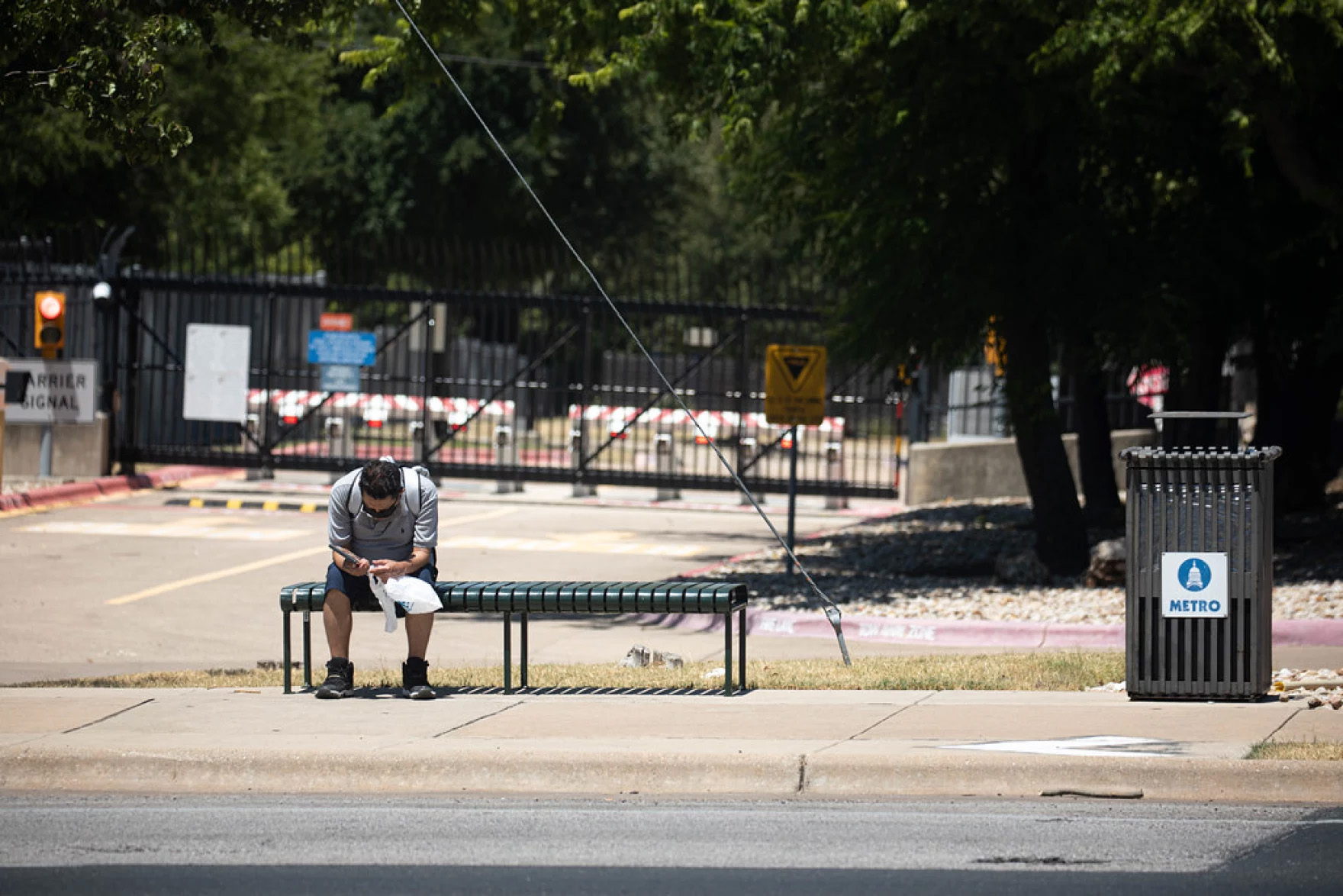From KUT:
As Austinites continue to slog through a stretch of 100-degree days, some residents are experiencing more extreme heat than others — and more challenges to their health.
Satellite data show temperatures trend higher downtown and throughout much of Austin’s Eastern Crescent, a curved-shaped region that spans the southern and northern reaches of East Austin. Lack of shade, as well as asphalt roads and dark building materials that retain heat, create “heat islands” in this area, which is where much of Austin’s low-income housing is located.
In 2020, the city got funding from the National Oceanic and Atmospheric Administration to conduct a study that provided more insight into the specific neighborhoods that bear the brunt of Austin’s intense heat. Volunteers drove different routes across the East Side, using devices to take surface temperatures and create a map of Austin’s heat islands.
“These areas that had higher temperatures also were areas that had been historically redlined,” said Kevin Lanza, an Austin-based assistant professor with UTHealth Houston whose work focuses on the effects of urban heat.
Redlining was a discriminatory policy in which neighborhoods populated mainly by racial minorities were denied home loans and priced out of homeownership, resulting in fewer opportunities to build wealth. Austin maps from the 1930s show evidence of this practice, highlighting swaths of East Austin as “hazardous” communities.
“Although [the policy] hasn’t been in place since the 1960s, we still see those same areas continue to be disinvested in and don’t have the same urban characteristics as other parts of town that have lower temperatures,” Lanza said.
Since more lower-income residents live in these areas, Lanza says, they are more likely to use public transportation and forgo heavy A/C use, further intensifying their experience with heat.
More calls for help
This can have tangible health effects. Immediate health risks include heat exhaustion and even heat stroke, which can result in hospitalization or death.
In the summer of 2021, researchers at UT Austin tracked all the heat-related EMS calls in the city, plus the response time to those incidents, calculated by combining how long it took EMS to respond to the scene with how long it took to get to the nearest hospital.
The clusters with the most heat-related EMS incidents were primarily found downtown and on the East Side. Reaction times were also worse in areas east of I-35, especially in Northeast Austin and the more remote areas of Eastern Travis County.
“I strongly believe that it’s crucial for policymakers to identify areas with a higher vulnerability and limited accessibility to EMS services as a top priority for improvement,” Kijin Seong, the study’s lead author, said.
Long-term health effects
The health effects of heat can also take longer to reveal themselves. The World Health Organization warns that increases in temperature beyond seasonal norms are associated with worse cardiovascular and respiratory outcomes, as well as chronic diseases, including diabetes.
Lanza credits many of these effects to the tendency to engage in less physical activity when it’s hot out. He said heat’s influence on physical activity was evident in another study he worked on with the City of Austin in 2019. The Green Schoolyards Project compared heat indexes at parks in Austin ISD’s Barrington, Cook and Odom elementary schools, all of which serve predominantly Latino neighborhoods. Researchers found kids were less physically active when temperatures went up, particularly when temperatures exceeded 91 degrees.
They also found shade made a difference; a playground at Barrington School Park shaded by mature trees stayed around 10 degrees cooler than unshaded playground just 100 feet away. Children tended to shift their activity to the shaded areas at all parks.
Because these three parks also serve as primary green spaces for their surrounding neighborhoods, Lanza said adding more trees and shade structures would benefit the whole community. He credits Austin ISD with prioritizing this effort; for example, young trees have been planted alongside a broad, open field at Barrington.














